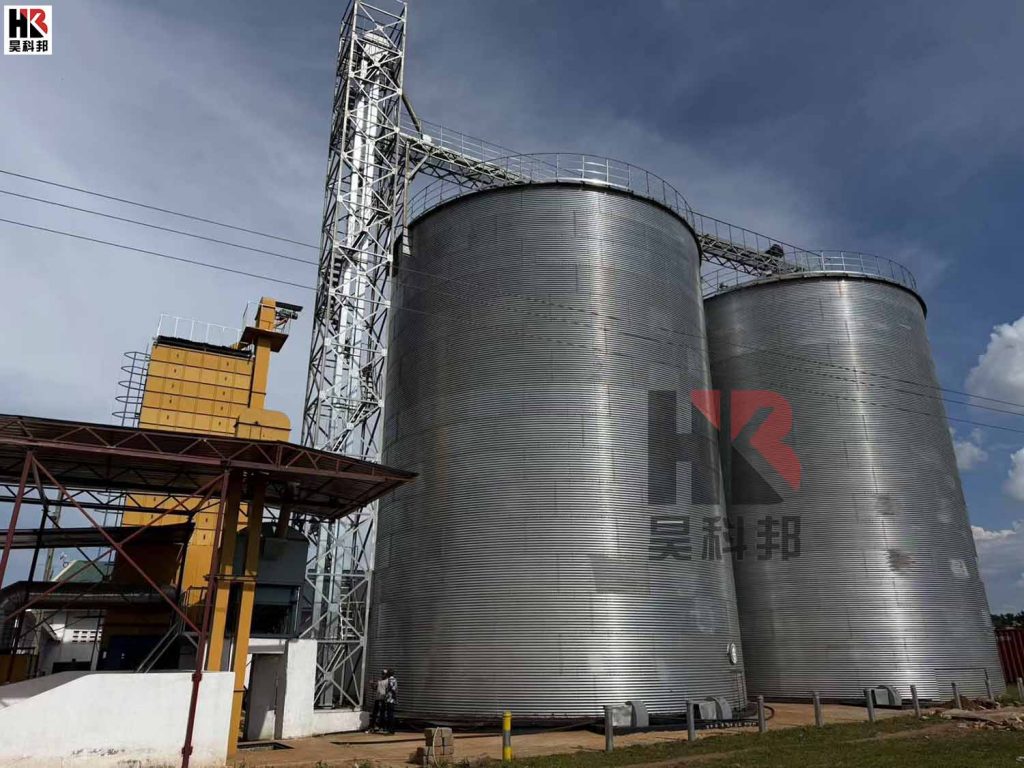Grain silos are essential facilities for modern grain storage. The professionalism and efficiency of their installation process directly affect the safety and convenience of subsequent use. This article will detail the installation process of grain silo to help you better understand this process.

Before the installation process of grain silo begins, a detailed site survey is necessary. This step is crucial as it directly impacts the foundation design and overall layout of the silo. A professional team will comprehensively assess factors such as the site's geological conditions, load - bearing capacity, and surrounding environment to ensure the stability and safety of the silo after installation.
Based on the survey results and silo design requirements, prepare the necessary installation equipment and materials. This includes high - quality steel plates, connectors, welding materials, etc. All materials must undergo strict quality inspection to meet national and industry standards. Meanwhile, prepare essential installation tools and equipment, such as cranes, welding devices, and measuring tools, to ensure the smooth progress of the installation.
The foundation is key to ensuring the stability of the grain silo installation process. Based on the site survey results, excavate and treat the foundation. Typically, excavation to the designed depth is required, removing debris and loose soil, followed by compaction. For sites with poor geological conditions, foundation reinforcement may be necessary, such as piling or using foundation reinforcement materials, to ensure the foundation's load - bearing capacity meets the silo's requirements.
After foundation treatment, proceed with concrete pouring. Choose an appropriate concrete mix to ensure the strength and durability of the foundation. During pouring, strictly control the vibration and curing of the concrete to avoid quality issues such as honeycombing. After concrete pouring is complete, proper curing is necessary to ensure full hardening and stability.
The silo body is the main part of the grain silo installation process, and its installation quality directly affects the silo's airtightness and service life. Transport the pre - fabricated silo body steel plates to the site and use professional measuring tools for positioning and assembly. Ensure the verticality and roundness of the silo body meet the design requirements, then proceed with welding or bolted connections. During welding, strictly control welding quality to avoid defects.
After the silo body installation is complete, install various accessories, such as ventilation openings, observation ports, and material inlets and outlets. The installation positions and methods of these accessories must strictly follow the design requirements to ensure their proper functioning. At the same time, conduct sealing treatment on the silo body to prevent rainwater and dust from entering the silo and affecting grain quality.
The ventilation system is an important part of the grain silo installation process, and its installation quality directly affects grain storage effectiveness. Install ventilation ducts and fans according to the design requirements. Ensure the ventilation duct layout is rational to achieve uniform airflow. The fan installation position should be convenient for operation and maintenance, while also ensuring stable operation and noise compliance with environmental requirements.
Conveying equipment is used for grain loading and unloading operations, and its installation quality directly affects the convenience and efficiency of these operations. Install bucket elevators or belt conveyors based on the silo height and layout. Ensure the conveying equipment installation position and angle are rational for easy grain loading and unloading operations. Meanwhile, conduct equipment commissioning to ensure smooth operation without jamming.